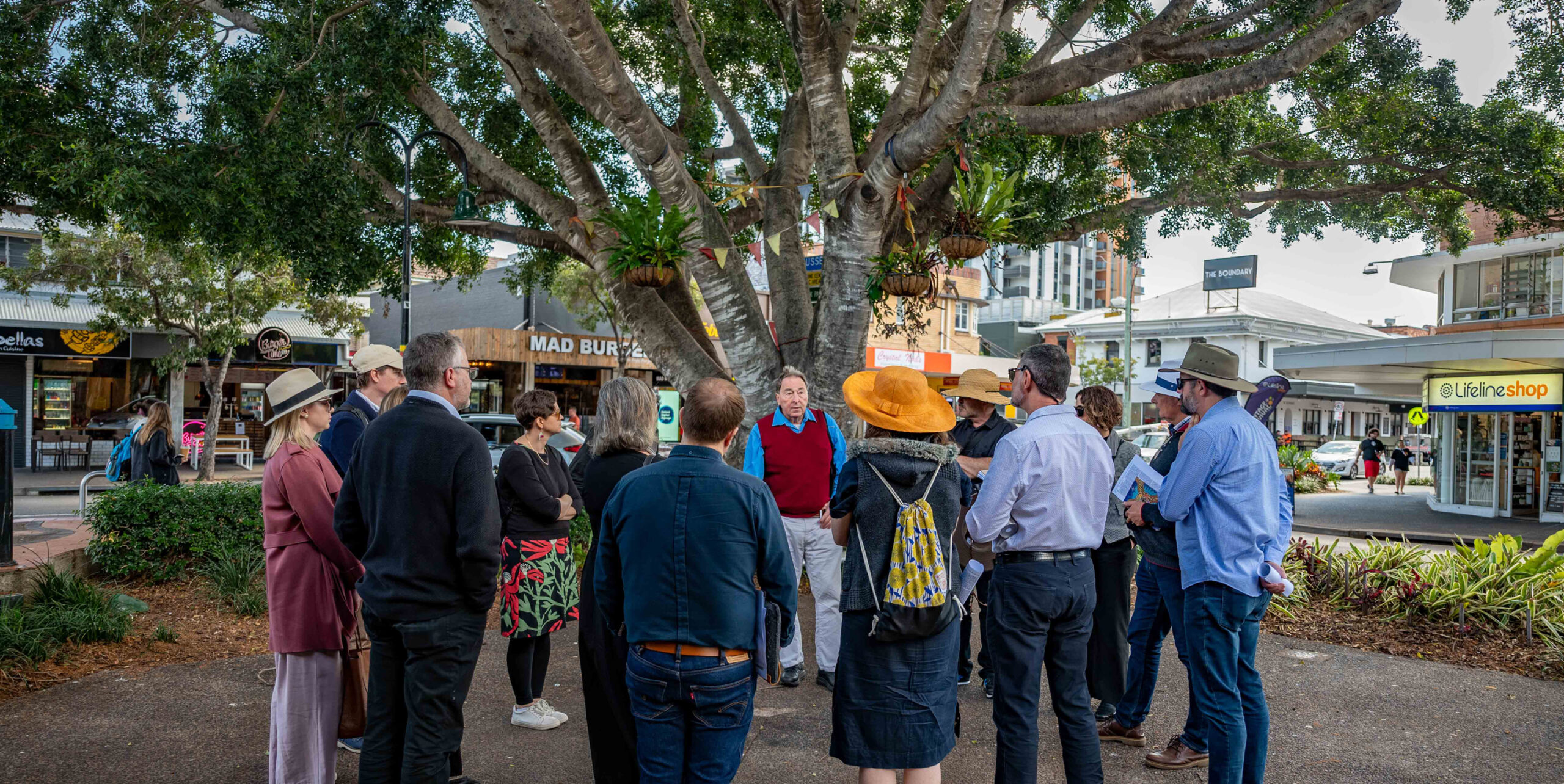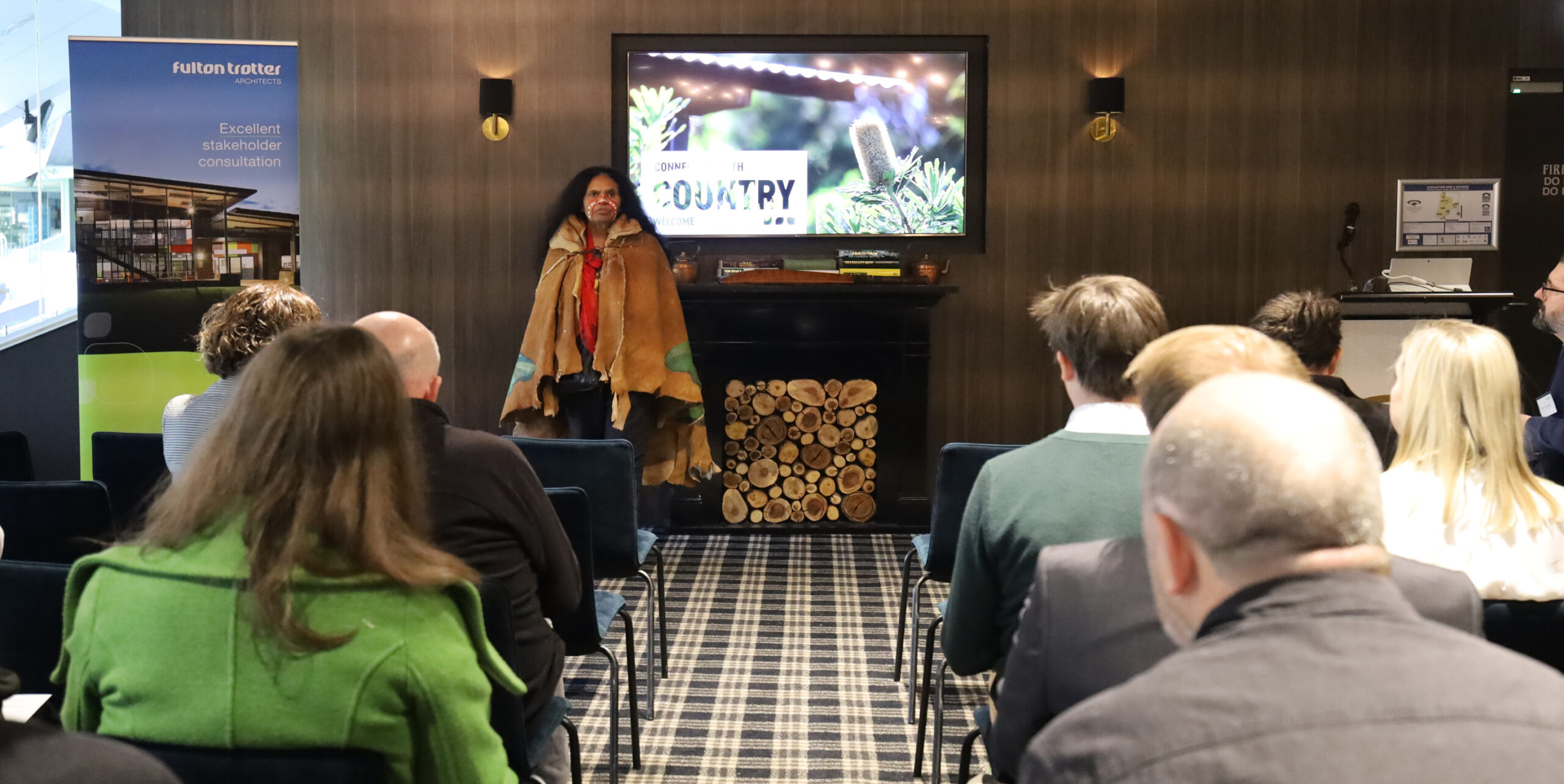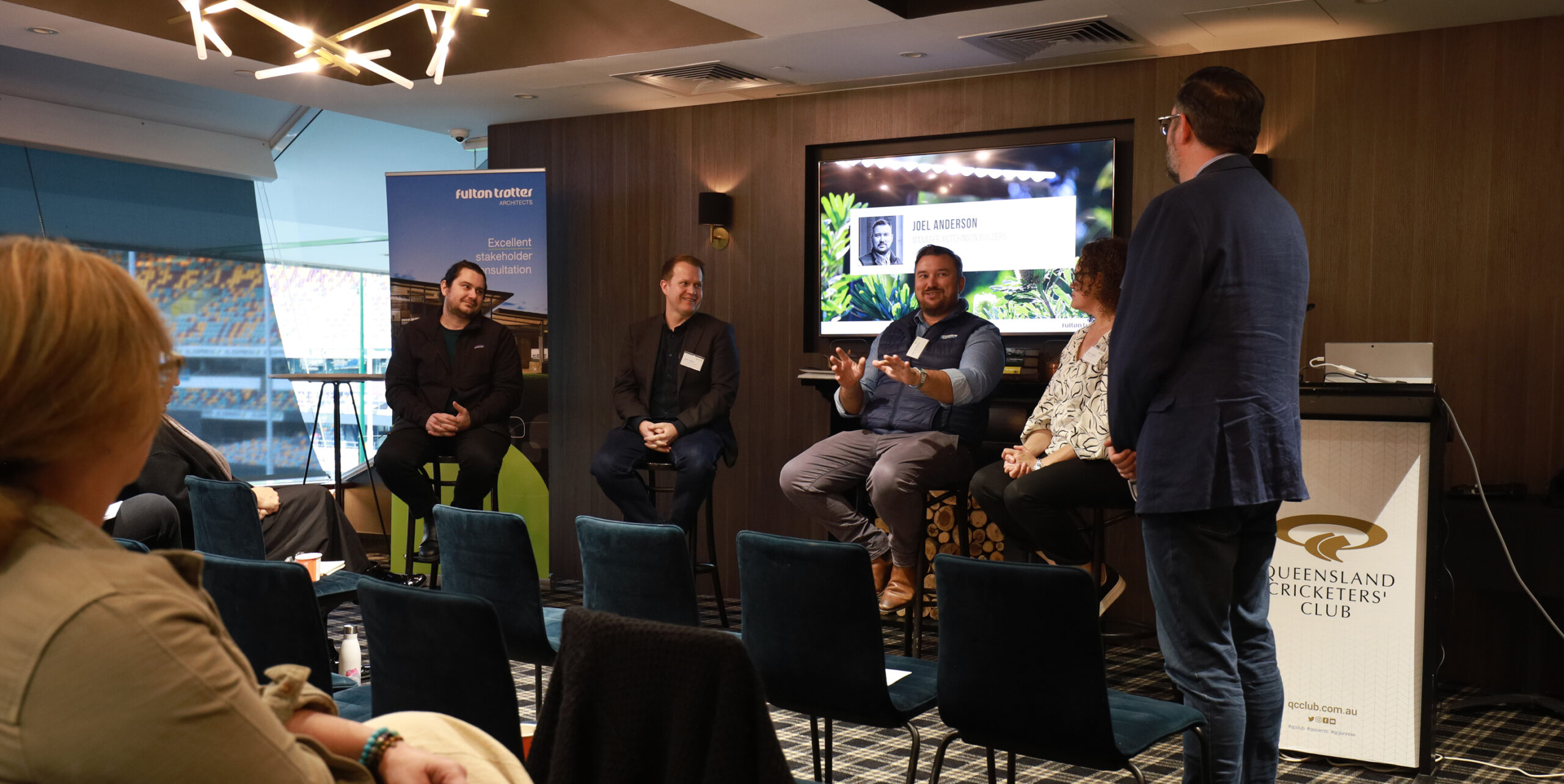Connection With Country
Reflections on the Fulton Trotter Forum
Words by: Angela Barbeler, Associate
The land we call Australia is a diverse nation with an ancient and unceded culture and people. We believe that cross-cultural awareness, knowledge and understanding are critical to producing a better built environment that respects and responds to country and First Nations culture, with the aim of moving ever closer towards a society of inherent respect, inclusion and wellbeing.
There has been a great deal of momentum building in this area and many of us are considering how to join this journey in an appropriate, sensitive and informed way. Where to start, who to talk to?
In August, Fulton Trotter Architects hosted a forum entitled Connecting with Country, where we invited our clients and consultants to join our senior leadership team in this discussion around architecture and its intrinsic connection with the land on which we work.
The aim of the session was to increase our understanding, knowledge and awareness of the indigenous cultural landscape of our surrounds. The overall objective of delving into this topic has been to continue to build on our respect, sensitivities and celebration of our nation’s indigenous heritage and to learn how we can consider these aspects as integral to our design approach.

The day began with the Fulton Trotter Directors and Associates gathering in Highgate Hill for an Aboriginal Cultural Landscape Walking Tour around South Brisbane, hosted by Kabi Kabi scholar Mr Alex Bond and Professor Paul Memmott of University of Queensland. We were enlightened and humbled by the unique stories of the land, the seasons, the history and the people, which set the scene for the afternoon session that followed.
Joined by a group of our clients and consultants, the Forum saw four presenters speak on the topic of Connection with Country. Welcome to Country was performed by Songwoman Maroochy Barambah and included a traditional song, a short cultural awareness on the Turrbal people’s history, a snippet of the Australian National Anthem in Turrbal language as well as a blessing song.

Songwoman Maroochy Barambah
Troy Casey
The first of the speakers was Troy Casey, Kamilaroi, Director at Blaklash Creative, who spoke about Designing with Country in Mind – First Nations Agency in the Built Environment. His energetic and deeply personal presentation discussed his company’s agenda for creating positive social change for First Nations Australians, as well as his vision for ensuring that First Nations’ voices are embedded across projects within public art, placemaking and urban design.
John Ward
Fulton Trotter Director John Ward followed with a discussion on his team’s experience on projects working within the NSW Government’s Connection to Country program, and how this process has assisted in developing tools and methods for First Nations engagement that can be built upon and employed within future design projects.
Kym Korbe
The third speaker was Kym Korbe, Koa, Kuku Yalanji (Wakka Wakka), Manager of the RAP Program at UnitingCare Queensland who spoke about Storytelling – An essential Connection to Country. Kym discussed her experiences leading UnitingCare’s Aboriginal and Torres Strait Islander Strategy and Partnerships team, and her commitment to strengthening relationships between UnitingCare, the wider community and First Nations communities across Queensland.
Joel Anderson
The following presentation by Joel Anderson, Manager of Social Responsibility and Indigenous Participation at Hutchinson Builders focused on his experiences working for more than a decade with Aboriginal and Torres Strait Islander communities across the country in his talk titled Timing, Tokenism and Tangible Outcomes: Lessons learnt in First Nations Engagement, Design and Construction. A descendant of the Awabakal People from the NSW Central Coast, his engaging discussion highlighted the benefits in community engagement, education, training and employment programs for First Nations youth within the construction industry, as well as valuable lessons that he and his team have learned along the journey, to continue to improve the programs and opportunities into the future.
Each of the four presenters was then invited to engage with the audience in a panel style discussion, fielding questions and providing food for thought on each other’s topics and ideas. As the formal session concluded and the speakers dispersed throughout the audience to continue the dialogue, the room was abuzz with chatter, queries and conversation that is sure to continue long after the evening came to a close. Although just a small step on this journey, we are grateful to each of our forum participants for their time and are eager to continue to learn more about how to put these lessons into practice.




